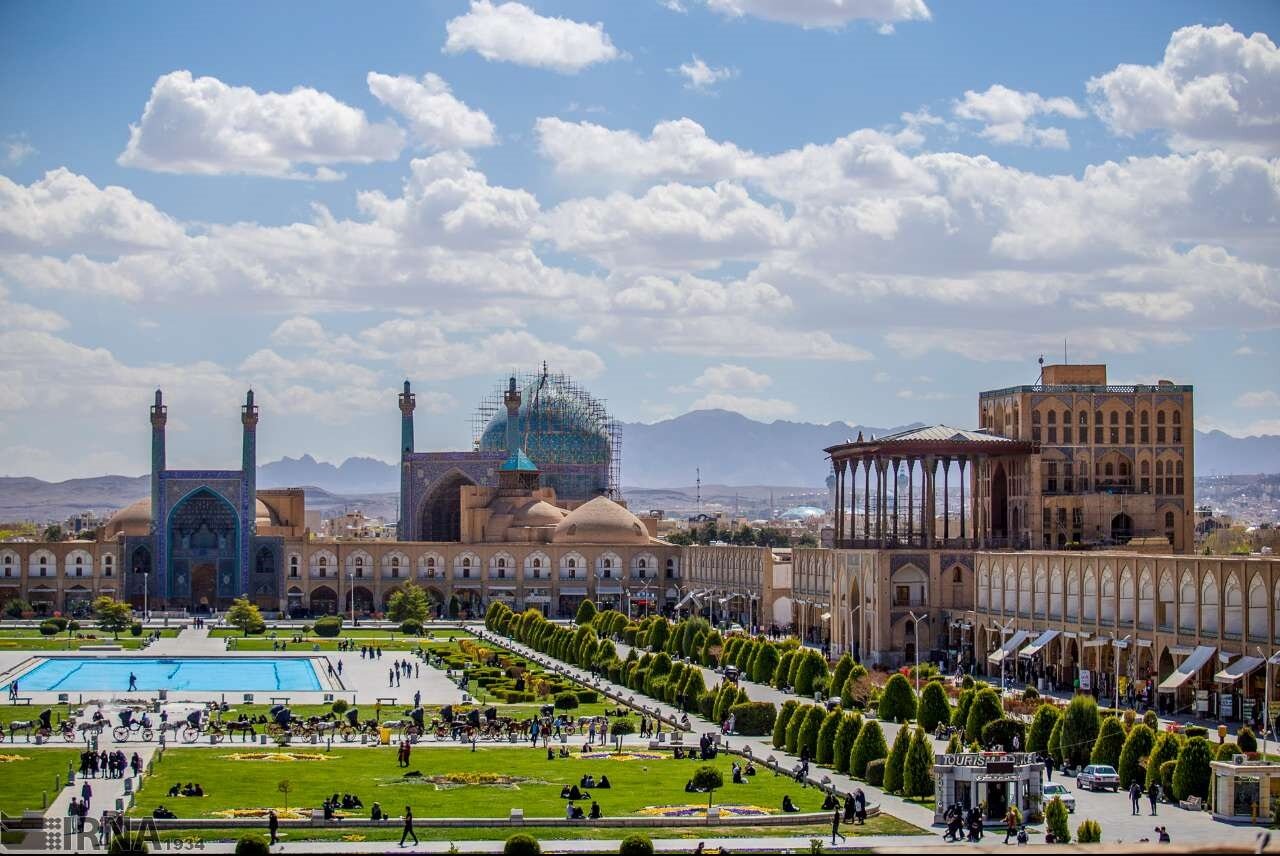Subsidence threats prompt new study on UNESCO-listed square in Isfahan

TEHRAN - Authorities in Isfahan plan to conduct a comprehensive study to assess the extent of land subsidence at the UNESCO-listed Naqsh-e Jahan Square, amid growing concerns that the phenomenon is threatening some of Iran’s most treasured architectural heritage.
According to Amir Karamzadeh, Director General of Isfahan’s Cultural Heritage, Tourism and Handicrafts Department, 20-billion-rial (approximately $22,000) research contract has been signed to monitor and evaluate the rate of subsidence at the historic site.
The square, one of the largest and most important in the world, is home to several 17th-century Safavid-era monuments, including the Imam Mosque (originally named the Shah Mosque), Sheikh Lotfollah Mosque, and the Ali Qapu Palace.
“This study aims to propose solutions to mitigate the impacts of land subsidence on Naqsh-e Jahan and surrounding monuments,” Karamzadeh told IRNA on Monday.
He noted that the issue extends beyond Naqsh-e Jahan, affecting other historic structures in the city. Regular monitoring of subsidence effects is also being carried out on major heritage landmarks such as the Jameh Abbasi Mosque, Sheikh Lotfollah Mosque, and Ali Qapu Palace.
Recent data from Iran’s Geological Survey indicates that Isfahan is experiencing land subsidence at an [alarming] average rate of 15 to 18 centimeters per year, IRNA reported.
Experts attribute the crisis primarily to the over-extraction of groundwater in the Borkhar Plain — a consequence of chronic water shortages and insufficient river flow from the famed Zayandehrud river.
Karamzadeh confirmed that special sessions have been held with national authorities, including the Minister of Cultural Heritage, the head of Iran's Planning and Budget Organization, and the National Disaster Management Organization, to emphasize the urgency of the potential threat and request dedicated funding.
“A national approach is essential,” Karamzadeh stated, adding that funding proposals are currently under review by both the provincial crisis management office and the Ministry of Cultural Heritage to address damage caused by subsidence.
Environmental experts continue to warn that excessive groundwater withdrawal and the blockading of water from flowing across the historical Zayandehrud river may pose threats and escalating risk to Isfahan.
The ancient city of Isfahan, which serves as the provincial capital as well, is situated at the crossroads of Iran’s north-south and east-west trade routes. It reached its zenith between the 9th and 18th centuries. During the Safavid era, it became Iran’s capital under Shah Abbas the Great.
Isfahan was once a crossroads of international trade and diplomacy in Iran and now it is one of Iran’s top tourist destinations for good reasons. It is filled with many architectural wonders, such as unmatched Islamic buildings, bazaars, museums, Persian gardens, and tree-lined boulevards. It’s a city for walking, getting lost in its mazing bazaars, dozing in beautiful gardens, and meeting people.
The Persian proverb “Isfahan nesf-e-jahan ast” (Isfahan is half the world) reflects the city’s cultural and historical prominence.
AM
